Peony is a popular flower in Chinese culture and has a significant meaning attached to it. The peony, also known as Mudan in Chinese, is a symbol of wealth, good fortune, prosperity, and happiness. It is a national flower of China, and its importance can be traced back to ancient times.
what is a tree peony?
An indigenous peony to China and Japan is the tree peony, also known as Paeonia suffruticosa. Tree peonies are woody bushes that grow slowly and can live for several decades, in contrast to the more popular herbaceous peonies that die back to the ground every year. Large, spectacular blossoms in a variety of hues, including pink, red, white, and yellow are what make them so highly prized.
The herbaceous peony and tree peony are related and both belong to the Paeoniaceae family. Although it often takes several years to reach this size, it is a deciduous shrub that may get up to six feet tall and wide. The plant has a woody stem that is covered in up to eight-inch-long, dark green leaves. The leaves are lustrous and have deep lobed edges.
Large, beautiful blossoms that can reach a diameter of 10 inches are a trademark of the tree peony. The flowers are colourful and bloom in the middle to end of spring. They can be pink, red, white, yellow, or even purple. Gardeners and florists highly value the petals since they are frequently ruffled and have a velvety texture.
In general, tree peonies are hardy plants that can endure severe temperatures and even frost. They do, however, need plenty of sunlight and soil that drains well in order to thrive. To keep them in form and encourage healthy growth, they also gain from routine pruning.
The tree peony represents honour, wealth, and prosperity in traditional Chinese culture. In Chinese literature and art, it frequently appears as a representation of the grace and beauty of nature. The tree peony is particularly highly prized in Japan, where it is frequently used in customary flower arrangements.
The huge, colourful flowers and lovely foliage of tree peony make them a popular option for gardens and landscapes. They can be utilised as the centre of attention in a garden bed or planted in clusters to produce an amazing display of colour. Moreover, they make wonderful cut flowers that are frequently used in bouquets and other floral arrangements.
Despite its beauty, growing tree peony can be difficult, especially for amateur gardeners. They need sun and a soil that drains well, but too much sun might cause the blossoms to fade prematurely. To keep them in form and encourage healthy growth, they also need frequent pruning.

what is a peony flower?
The Paeonia genus includes the blooming plant species known as peonies. The herbaceous perennial peony is a native of Asia, Europe, and North America. It grows from bulbs. They are favoured for their substantial, eye-catching blossoms and alluring foliage, which makes them a well-liked option for gardens and floral arrangements.
There are many different hues of the peony flower, including pink, red, white, yellow, and even purple. Large flowers with several petals placed symmetrically around a centre cluster of stamens are the norm for these flowers. The petals can be smooth or ruffled, and their frequently velvety feel adds to their allure.
Herbaceous peonies and tree peony are the two primary categories of peonies. Tree peonies are woody shrubs that can thrive for several decades, in contrast to herbaceous peony, which annually die back to the ground. Both varieties of peonies are prized for their aesthetic appeal and are frequently used in floral arrangements, bridal bouquets, and other ceremonial contexts.
Peonies are a common garden plant as well, and numerous cultivars have been created over time to satisfy consumer desire for novel and distinctive types. They are typically simple to cultivate and flourish in soil that drains well and receives lots of sunlight. Depending on the cultivar, they can be planted in the fall or spring and normally bloom in late spring to early summer.
Peonies provide therapeutic benefits in addition to being beautiful. For ages, menstrual cramps, liver disease, and inflammation have all been treated using the peony plant’s root, known in traditional Chinese medicine as Baishao. It is said that peony root can create harmony and balance by cooling the body.
what do peonies Chinese call?
The peony, also known as Moutan, Fuguihua, Lujiu, Shugu, Bailiangjin, and Tangshizi, is a colorful and magnificent flower with large and gorgeous blossoms, known as the “king of flowers” in China.

where does peonies originate from?
Peonies originate from Asia, Europe, and North America. The exact origin of the peony is uncertain, as the plant has been cultivated for thousands of years and has a long history of use in traditional medicine and cultural practices.
The peony is believed to have originated in China, where it has been cultivated for more than 2,000 years. It was highly valued for its beauty and medicinal properties, and it was often used in traditional Chinese medicine to treat various ailments, including liver disease, menstrual cramps, and inflammation.
From China, the peony was introduced to Japan and Korea, where it also became a popular garden plant and was used in traditional medicine. In Europe, the peony was introduced during the Middle Ages and quickly became a favorite among gardeners and horticulturists.
In North America, the peony is native to regions of the western United States, where it grows wild in mountainous areas. Native American tribes used the plant for its medicinal properties and also as a source of food.
what kinds of peony flowers in China?
China is home to many different types of peony flowers, which have been cultivated and appreciated for their beauty for thousands of years. Here are some of the most popular types of peony flowers in China:
Paeonia lactiflora: This is the most commonly cultivated peony in China, with many different cultivars available. It has large, fragrant flowers in shades of pink, white, and red.
Paeonia suffruticosa: This is a tree peony that is highly valued in China for its large, showy flowers and attractive foliage. It has many different cultivars, each with unique flower colors and patterns.
Paeonia rockii: This is a type of tree peony that is native to China and has large, fragrant flowers in shades of pink and white. It is highly prized for its ornamental value and is often used in traditional Chinese gardens.
Paeonia delavayi: This is a rare species of peony that is native to southwestern China. It has delicate, cup-shaped flowers in shades of pink, red, and purple and is often grown for its ornamental value.
Paeonia veitchii: This is a woodland peony that is native to central and western China. It has small, delicate flowers in shades of pink and white and is highly valued for its subtle beauty.
Paeonia tenuifolia: This is a herbaceous peony that is native to western China and has finely cut foliage and small, brightly colored flowers in shades of red and pink.
These are just a few examples of the many different types of peony flowers that can be found in China. Each variety has its own unique characteristics and is highly valued for its beauty and cultural significance.
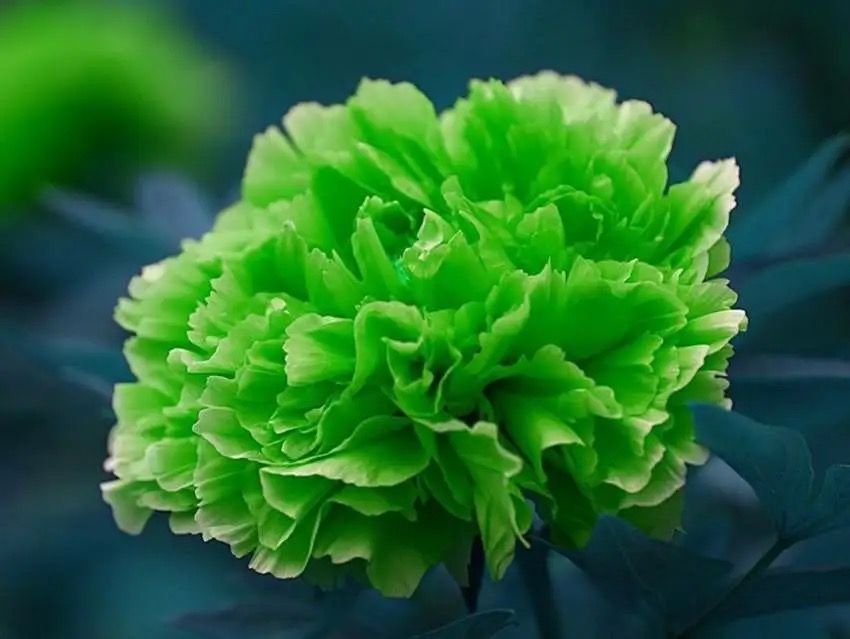
peony origin
There are two different theories about the origin of peonies. One theory is consistent with the legend of peonies and suggests that peony cultivation began during the Sui Dynasty, flourished during the Tang and Song Dynasties, and reached its peak during the Ming and Qing Dynasties. According to the Song Dynasty’s “Hai Shan Ji”, Emperor Yang of Sui built the Xiyuan Garden in Luoyang and ordered for the best rocks and flowers to be gathered from around the country, including 24 different types of peonies from Yizhou (now Yixian County, Hebei Province). The beauty and charm of peonies captured the heart of one of Emperor Yang’s wives, who lamented that she could not see them from the tower. In order to please his beloved wife, Emperor Yang ordered the best flower craftsmen to gather in the capital city to cultivate peonies that could grow taller than the tower. However, many craftsmen failed in their attempts, and as a result, thousands of them were executed. It was not until the flower master Qilu Huan from Caozhou successfully grafted peonies onto the trunk of a Chinese flowering tree taller than the tower that the wife finally smiled. From then on, the luxurious peony began to enter the royal gardens.
Another view holds that the cultivation history of peonies is far more than just over 1,500 years and has a long history of more than 5,000 years. As a species in nature, peonies should belong to the oldest angiosperms in the biological world, with their primitive groups appearing in the tertiary period of the rise of angiosperms, even earlier than the ancestors of humans. During the period of the “Three Sovereigns and Five Emperors,” the tribal leader Fuxi paid attention to the “reason for all illnesses” of the people and “tasted all herbs and made nine needles.” Later, Yan Emperor and Shennong, who lived in the ancient Heze area, continued to “taste the flavor of all herbs to cure the suffering of the people.” By chance, Shennong discovered that the root bark of peonies could “remove stubborn diseases and promote blood circulation, leaving the digestive system and stabilizing the five internal organs,” and recorded it in the “Classic of Herbal Medicine.” Therefore, people competed to introduce and transplant peonies, which should be the beginning of artificial cultivation of peonies with a history of at least 5,000 years. Although peonies have a history of 5,000 years, due to the remote location and poor transportation of Heze, coupled with the relatively closed economic development model dominated by agriculture, the dissemination of local peonies was greatly restricted and they were once “hidden in the deep boudoir and unknown to the public,” until the Ming and Qing dynasties when they gained a great reputation and became renowned nationwide.
peony in Chinese history
Peonies have a long and rich history in China, where they have been cultivated and appreciated for their beauty and cultural significance for thousands of years. Here are some of the key moments in peony history in China:
The Qin dynasty (221 BCE – 206 BCE):Peonies are native to the provinces of the Yangtze River and Yellow River valleys in China, where they grow wild in the mountains and hills. People discovered their medicinal and ornamental value and began cultivating them. Both peonies and herbaceous peonies belong to the Paeonia genus of the Paeoniaceae family, with similar flower shapes, but the former is a woody plant and the latter is an herbaceous plant. In the classical texts before the Qin dynasty, only herbaceous peonies were mentioned, and there was no record of tree peonies. People first recognized peonies for their medicinal value. The earliest written record of peonies was found in the medical prescription of an Eastern Han dynasty tomb in Baishu Township, Wuwei City, Gansu Province in 1972, which used peonies to treat “blood stasis disease”. It is the earliest known written record of peonies to date.
The Han dynasty (206 BCE – 220 CE): Peonies were first cultivated during this period, and they quickly became a favorite among the nobility and wealthy merchants. They were used to decorate gardens, and their fragrant flowers were often used in perfume.
The Sui dynasty (581–618):During the Sui dynasty, many peony varieties had already appeared, such as “Feilaihong,” “Tianwaihong,” “Yifu Huang,” and “Chanfengjiao.” These were planted in the imperial gardens, marking the beginning of peonies entering the cities from the countryside and entering the royal palace from the folk gardens. From then on, peonies began their “rich and prosperous journey”.
The Tang dynasty (618–907): This was a golden age for peonies in China, and the flower was highly prized for its beauty and symbolism. It was often depicted in art and poetry, and it became associated with the imperial court and the wealthy elite.
During the Tang Dynasty, the peony in Chang’an, the capital city, experienced rapid development based on the introduction of Luoyang peonies. At that time, there were already flower experts who specialized in planting peonies. During the Sui Dynasty, many peony varieties such as “Feilaihong”, “Tianwaihong”, “Yifu Huang”, and “Chanfeng Jiao” had appeared, and they were planted in the imperial gardens. This marked the beginning of the transition of peonies from rural areas to urban cities and from ordinary gardens to royal palaces. Since then, peonies began their “glorious journey”.
During the Tang Dynasty, the cultivation technology of peonies made great progress. At least five colors of peonies were produced: dark red, deep purple, pink, white, and yellow. Double-petal peonies also appeared. In the Tang Dynasty court, great attention was paid to peony flower arrangements, and strict requirements were imposed on the environment, pruning tools, containers, and stands. In addition to enjoying peony flower arrangements, people also engaged in painting, music, drinking, and poetry. The obsession with peonies in Chang’an was closely related to the political, economic, and cultural development of the Tang Dynasty.
The Song dynasty (960–1279): During this period, peonies became even more popular and were grown in vast numbers throughout China. They were used to decorate gardens, temples, and public spaces, and they were often given as gifts to friends and loved ones.
The Ming dynasty (1368–1644): This was a period of great cultural and artistic achievement in China, and peonies continued to be an important part of Chinese culture. They were often used as decorative motifs in ceramics, textiles, and other forms of art, and they were celebrated in poetry and literature.
The Qing dynasty (1644–1911): Peonies remained popular during this period, and they were often used in traditional Chinese medicine to treat a variety of ailments. They were also used to decorate the imperial gardens and were an important part of the imperial court’s cultural and artistic life.
Today, peonies continue to be an important part of Chinese culture, and they are treasured for their beauty and cultural significance. They are often used in weddings and other important ceremonies, and they are an enduring symbol of prosperity, good fortune, and love.
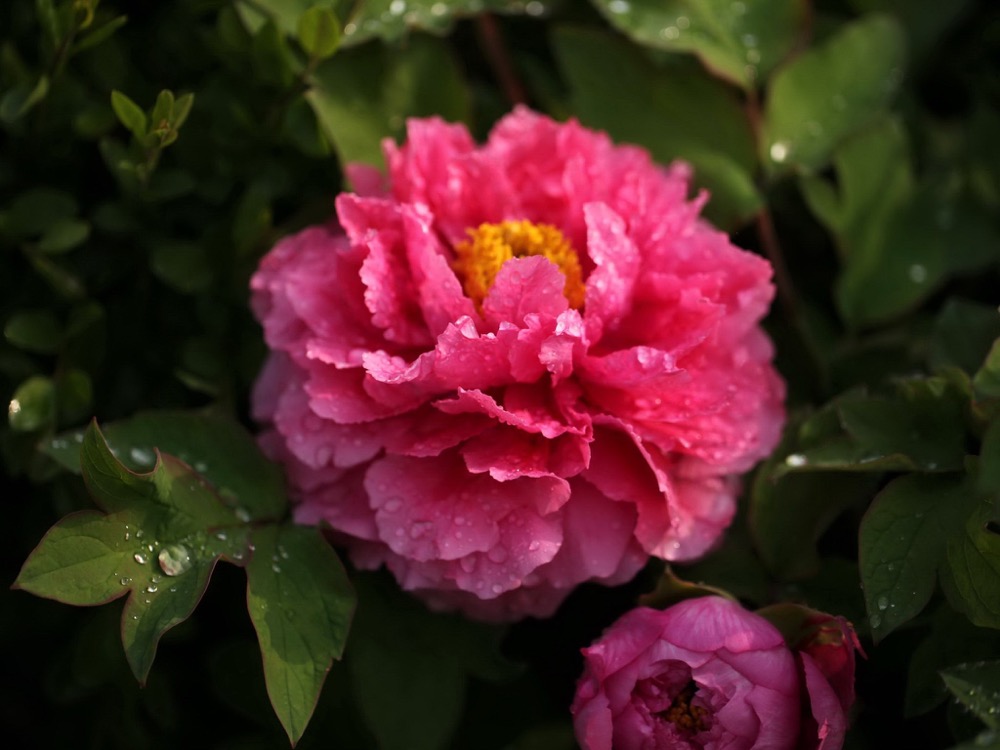
why is peony the national flower of the tang dynasty
During the Tang Dynasty in China, peonies were regarded as the national flower and were given special status and symbolic significance. The Tang people’s love for peonies was not only evident in literature, art, and garden construction, but also in politics, economics, and religion.
Firstly, peonies had important symbolic meaning in Tang politics. Emperor Taizong of Tang, Li Shimin, once designated peonies as the national flower, believing that they symbolized the prosperity of the country. By designating peonies as the national flower, the imperial court not only demonstrated its prestige and glory, but also provided the people with a common cultural symbol.
Secondly, the Tang people’s love for peonies was also reflected in the economic sphere. Due to their high value during the Tang Dynasty, peonies became an important commodity in trade. According to records, the price of peonies in Luoyang during the Tang Dynasty was once higher than that of gold, becoming a symbol of wealth and status for the affluent class. At the same time, the peony planting industry gradually emerged, contributing to the local economic development.
Finally, the Tang people’s love for peonies was also reflected in literature, art, and garden construction. In Tang poetry, peonies were praised as the “national beauty and fragrance”, endowed with noble, mysterious, and gorgeous images.
At the same time, the Tang garden construction extensively utilized peonies, such as the Wei City Qu Garden and the Fengxiang Longmen Villa, which were themed around peonies, showcasing the Tang people’s love for this flower.
The concept of the national flower is an important component of Tang-Song court culture and poetry. Tang poets, such as Li Bai and others, used the peony flower as a symbol of the beauty of Yang Yuhuan, a famous imperial consort. However, later Tang poems also included implicit anxiety, using this floral image as a symbol of the country’s unhappiness.
is peony the national flower of China?
“The peony symbolizes national prosperity and is the most frequently depicted flower in Chinese painting. As early as the Qing Dynasty, the peony was designated as the national flower.During the Qing dynasty, when Empress Dowager Cixi held power from behind the scenes, the peony was officially designated as the national flower. In 1929, the Nationalist government changed China’s national flower from peony to plum blossom, which also holds a high status in China. After the founding of the People’s Republic of China, there was no definite selection for the national flower. Based on the vision of economic prosperity and the well-being of the people, some members of the National People’s Congress proposed two options for selection: either one country, one flower (peony) or one country, four flowers (peony, lotus, chrysanthemum, and plum blossom).
In the 1980s, China organized two national flower selection contests, one of which saw the plum blossom win first place and the peony in second, while in the other, the peony was crowned champion and the plum blossom ranked second. In 1988, a commemorative stamp was issued to mark the tenth anniversary of the Sino-Japanese Peace and Friendship Treaty, featuring the cherry blossom, Japan’s national flower, and the peony, China’s national flower.”
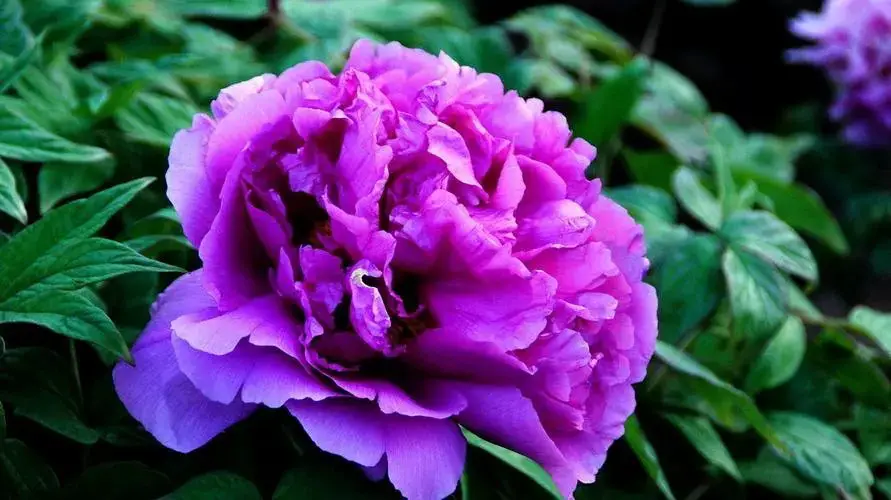
what does the peony symbolize in Chinese culture?
Symbolic meaning of peony: purity, nobility, elegance, grace, varied charm, national beauty and fragrance, and trustworthiness. Peony is the city flower of Luoyang, Heze, Tongling, Ningguo, and Mudanjiang in China, and is known as the flower of wealth and prosperity.
Symbolic meaning of peony:
When the peony is in full bloom, its gorgeous and colorful appearance represents the people’s vision and hope for a beautiful tomorrow, and symbolizes the prosperity and development of the country.
Peonies are a common theme in Chinese flower painting, and poets and painters throughout history have created countless works of poetry and art praising their beauty and expressing their emotions.
The noble temperament and stunning colors of the peony in paintings throughout history have given people a sense of wealth and prosperity. When combined with other flowers, birds, or rocks, peonies have different symbolic meanings, making them popular as decorative art in homes and public places.
Peonies are often paired with roses in paintings, as roses are known as “Changchun flowers,” which represent long-lasting wealth and prosperity.
Peonies are often paired with crabapples in paintings, symbolizing prosperity and good fortune.
peony flower meaning symbolism
National Beauty and Heavenly Fragrance: People have always used “国色天香” (national beauty and heavenly fragrance) to symbolize peonies, saying that peonies have both beautiful flowers and fragrant scent. It wasn’t until the Tang Dynasty, when Emperor Wen of Tang and his companion Cheng Xiujie went to the garden to appreciate the flowers. Emperor Wen of Tang loved peonies and would always ask Cheng Xiujie for peony-related poems. Cheng Xiujie responded with a poem by Li Zhengfeng, which reads “Heavenly fragrance stains my clothes at night, national beauty intoxicates me with wine at dawn.” Then, one day, Emperor Wen of Tang saw his beloved queen looking beautiful and elegant, and he also used these two lines of poetry. From then on, “国色天香” also referred to a person who is very beautiful.
Fearlessness against tyranny: When it comes to peonies not fearing tyranny, people will always think of the Jiao Gu peony. This is because during the time of Empress Wu Zetian, one winter was very cold, and she ordered all the flowers to bloom, but only peonies did not flower. Because of this, Empress Wu Zetian banished the peonies to Luoyang. To her surprise, the peonies bloomed brilliantly and were very beautiful. After learning about this, Empress Wu Zetian ordered people to burn the peonies, but the roots of the peonies survived and continued to grow strong, producing beautiful flowers. Therefore, people also refer to Luoyang peonies as Jiao Gu peonies, and the peony flower as a flower that is not afraid of tyranny.
Elegance and Grace: Peonies are known for their elegance and grace, which always give people a sense of refinement. In his “On the Love of the Lotus” , Zhou Dunyi wrote, “Ever since the Tang Dynasty, people have loved peonies very much.” The reason why people in the Tang Dynasty loved peonies was closely related to their aesthetics, which emphasized plumpness as a sign of beauty and wide streets. Peony flowers are also large and brightly colored, which gives people a sense of elegance and grace, which is similar to the aesthetic viewpoint of people in the Tang Dynasty.
Prosperity and Flourishing: In modern society, peonies symbolize prosperity and flourishing. In the Tang Dynasty, people also had this idea because peony flowers were large, round, and plump, and they were also brightly colored. These characteristics embody the feeling of prosperity and flourishing. It is precisely because of these characteristics that there is a beautiful poem in the Tang Dynasty that says, “Only peonies are truly national beauty, and when they bloom, they move the capital.”
Peony in the Chinese marriage certificate
In early China, marriage certificates were made of different materials such as Xuan paper, hardcover, silk, and woolen paper, and were mostly handwritten. Starting in 1912, ink printing was used and the wording became more elegant and beautiful.
After 1949, marriage certificates became small and compact. From 1952 to 1959, the peace dove, rice ears, and cotton were depicted on the marriage certificates, reflecting the significant role that agriculture played in the national economy at that time.
peony flower meaning
The peony flower symbolizes elegance, nobility, grace, beauty, wealth, and prosperity in many cultures, including Chinese culture. It is also associated with romance, love, and affection. In Western cultures, it is often seen as a symbol of honor, good fortune, and happy marriage. The peony is considered one of the most beloved flowers in the world and is often used in various art forms such as painting, poetry, and literature.
Red peony meaning: A wide and thick red flower, known as the king of flowers, symbolizes “wealth and honor,” and has a fiery attribute.
Purple peony meaning: A peony with purple petals, symbolizes “shyness,” and has a dark attribute.
White peony meaning: Symbolizes purity, elegance, grace, charm, and trustworthy people.
Green peony meaning: Symbolizes life, expectation, gentle love, and dedicated effort.
Black peony meaning: Symbolizes “love even in death.” In fact, there is no pure black peony in the peony family, and people usually refer to deep red or deep purple peonies as black peonies.
Pink peony meaning: Symbolizes elegance and luxury.
Yellow peony meaning: Symbolizes brightness, richness, and luxury.
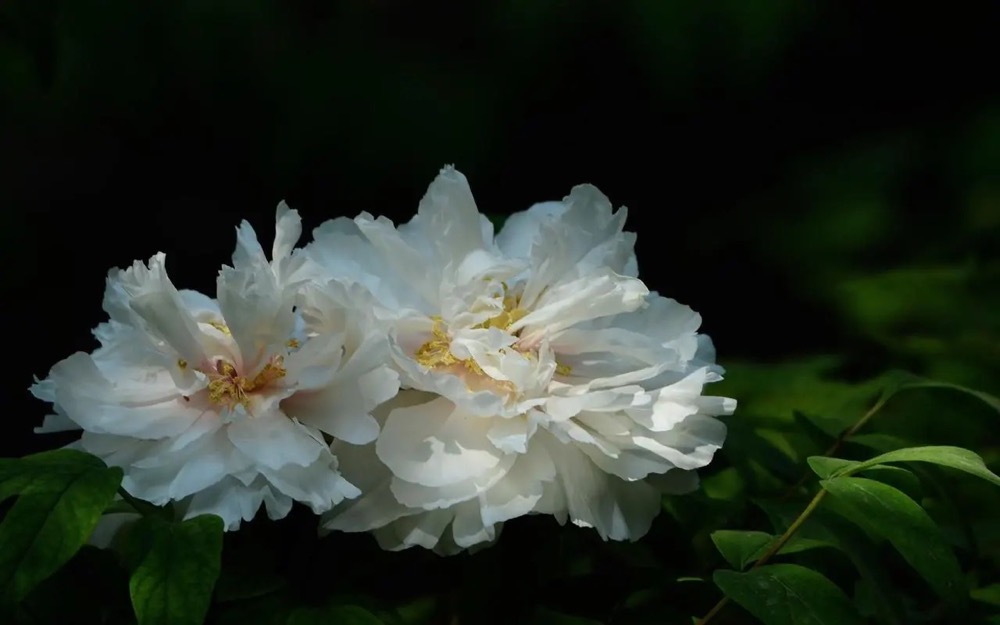
peony in Chinese Mythology story
The “King of Central China,” Luoyang Peony, has an interesting folk tale in which the protagonists are Empress Wu Zetian and the Peony Fairy.
One winter day, amidst freezing temperatures and heavy snowfall, Wu Zetian drank wine and wrote a decree ordering all the flowers in the garden to bloom in full splendor for her to admire.
The flowers, fearful of Wu Zetian’s power, bloomed overnight despite the harsh winter conditions, except for the Peony Fairy who refused to disobey nature and remained dormant.
The next day, Wu Zetian and her court went to the garden to view the flowers, and all the blooms amazed her, except for the peonies which remained closed.
Enraged, Wu Zetian wrote another decree to have the peonies uprooted and banished to Luoyang. Despite the punishment, the peonies remained true to their nature and waited for spring to arrive.
This further infuriated Wu Zetian, who ordered the peonies to be burned. After the flames died down, only ash and scorched earth remained.
However, the following spring, to everyone’s surprise, the peonies sprouted from the ashes and grew even stronger, producing more beautiful flowers than before.
From then on, the peony became famous throughout the country, with people calling it “the steel-boned peony” and “the peony born from the ashes.”
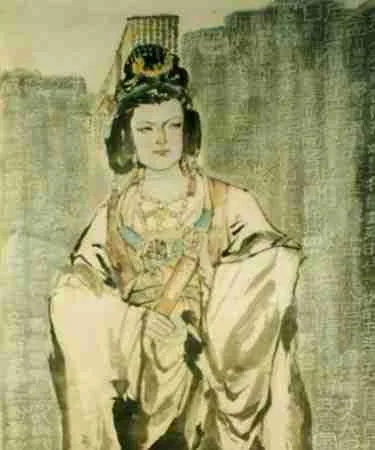
Peony and Yang Guifei
Emperor Xuanzong of Tang favored his concubine Yang Yuhuan and declared that they would visit Luoyang to see the peonies during the Lantern Festival. However, the peonies had not yet bloomed due to the cold weather. The local officials tried their best to make the peonies bloom before the arrival of the emperor and the concubine. However, the peony king named Yao Huang refused to bloom, and the officials were worried that the emperor would punish them for it. The chief eunuch Gao Lishi came up with a quick-witted explanation, saying that Yao Huang was too ashamed to bloom in front of the beauty of the concubine. The emperor and the concubine were delighted to hear this explanation and spared the officials from punishment. The officials spread this story to please the emperor and the concubine, and that’s how the saying “even the peonies are ashamed to bloom before Yang Yuhuan’s beauty” came about.
peony in feng shui
In Feng Shui, the Peony flower is believed to bring good luck, prosperity, and happiness. It is considered one of the most auspicious flowers, often associated with wealth, honor, and high social status.
The Peony is also believed to have strong protective energy and is often used to ward off negative energies or evil spirits. It is often recommended to place a painting or picture of the Peony flower in the living room or office to attract positive energy and enhance the overall atmosphere.
In addition, the Peony is associated with the element of Earth and the yin energy. It is said to promote calmness, relaxation, and stability, and is often used in Feng Shui cures for creating a peaceful and harmonious environment.
In terms of placement, the Peony is often recommended to be placed in the southwest corner of the home, as this area is associated with love and relationships. It is also believed to enhance the luck of those born under the Chinese zodiac sign of the Rooster.
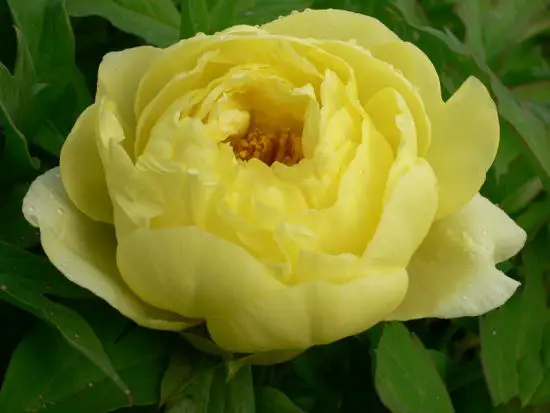
where to place peonies feng shui?
In feng shui, peonies are considered to bring good luck, prosperity, and love. They are often used to enhance the energy of the love and relationships area (also known as the southwest corner) of a home or room.
To place peonies in feng shui, you can consider the following tips:
Place fresh peonies in a vase in the southwest corner of your bedroom or home to enhance the energy of love and relationships.
If you have a painting or a picture of peonies, you can hang it in the southwest corner of your bedroom or home.
You can also use peony-themed decor items such as pillows, curtains, or bedspreads to enhance the love and relationships energy.
It is not recommended to place artificial peonies in your home or bedroom as they do not have the same energy as fresh flowers.
Avoid placing peonies in the bedroom of a single person as they are believed to attract a romantic partner, which may not be desirable for someone who is not ready for a relationship.
Remember that feng shui is not a one-size-fits-all approach, and it is essential to consider the specific layout and energy of your home and personal preferences when placing peonies or any other feng shui element in your space.
peony in Yin and Yang
In the philosophy of Yin and Yang, peonies are considered to have a balance of both Yin and Yang energies. The flower’s soft and delicate appearance represents Yin, while its vibrant and bold colors represent Yang. This balance of Yin and Yang energy makes the peony a popular flower in feng shui.
peony in Chinese new year
Peonies are not directly associated with the Chinese New Year celebration, which typically falls between late January and mid-February. However, in Chinese culture, peonies are a symbol of wealth, prosperity, and good fortune. Therefore, during the Chinese New Year season, many people choose to decorate their homes and businesses with flowers, including peonies, to bring luck and happiness into the new year.
Additionally, the color of the peony is significant. In Chinese culture, the color red is believed to bring good luck and fortune, especially during the Chinese New Year. Therefore, red peonies are especially popular during this time of year.
peony in the five elements
In traditional Chinese philosophy, the Five Elements (also known as Wu Xing) are Wood, Fire, Earth, Metal, and Water. Each element is associated with certain characteristics, such as colors, seasons, and emotions.
Peony is often associated with the Wood element in Chinese culture, as it is a flowering plant that represents growth and renewal. In the Five Elements theory, Wood is associated with spring and the color green. The Wood element is also linked with the liver and gallbladder organs in the body, as well as the emotions of kindness, generosity, and creativity.
In addition to the Wood element, peony can also be associated with the Fire element due to its vibrant and bold colors. Fire is linked with summer and the color red, as well as the heart and small intestine organs and the emotions of joy, enthusiasm, and passion.
Overall, the peony flower can be seen as a symbol of balance between the Wood and Fire elements in the Five Elements theory, representing growth and creativity along with passion and enthusiasm.
peony in Chinese medicine
In Chinese medicine, peony root (Bai Shao) is a commonly used herb that has been used for thousands of years. It is believed to have a cooling, calming effect on the body, and is often used to treat a variety of conditions related to women’s health and emotional well-being.
Peony root is said to nourish the blood and regulate menstruation, making it a popular remedy for menstrual disorders such as painful periods, irregular periods, and premenstrual syndrome (PMS). It is also used to ease the symptoms of menopause, including hot flashes, night sweats, and mood swings.
In addition, peony root is believed to have a calming effect on the liver and can be used to treat conditions such as anxiety, depression, and insomnia. It is also used to treat headaches, dizziness, and other symptoms associated with high blood pressure.
Peony root can be used alone or in combination with other herbs, and is often prescribed in traditional Chinese medicine in the form of a tea, tincture, or powdered extract. While it is generally considered safe when used as directed, it is important to consult a qualified practitioner of Chinese medicine before using peony root or any other herbal remedy.
peony in Chinese food
In Chinese cuisine, the peony flower is not typically used as a food ingredient. However, the peony root (Bai Shao or Radix Paeoniae Alba) is commonly used in traditional Chinese medicine as an herb to promote blood circulation, soothe the liver, and nourish the spleen. The root is also believed to have anti-inflammatory properties and is used to relieve pain and cramps.
Peony root is sometimes added to soups or stews, as well as to tea blends, to impart its health benefits. It can also be used as a natural dye to color food, such as steamed buns or dumplings, a pinkish hue. However, it is important to note that peony root should only be used under the guidance of a licensed healthcare practitioner or herbalist, as it can have potential side effects and interactions with certain medications.
peony in Taoism
Peony has a significant role in Taoism, the philosophical and religious tradition that originated in ancient China. Taoism sees peony as a symbol of female beauty, and it is often associated with the goddess Xi Wangmu, the Queen Mother of the West. In Taoist mythology, Xi Wangmu is known for growing magical peonies in her celestial garden that can grant eternal life to those who consume them.
Peony is also believed to have a connection with the concept of Yin and Yang in Taoism. It represents the Yin or female energy and is often paired with the masculine and Yang energy of the dragon. The combination of peony and dragon is considered to bring balance and harmony between Yin and Yang, and it is a popular motif in Chinese art and decoration.
Furthermore, in Taoist alchemy, peony is used as a medicinal herb to help balance the energies of the body and mind. It is believed to have a cooling and calming effect on the body, helping to alleviate symptoms such as anxiety and restlessness. The roots of the peony plant are used in traditional Chinese medicine to make a tonic called “Shao Yao Gan Cao Tang,” which is used to nourish the blood, soothe the liver, and regulate the Qi or life force.
peony in Confucianism
Peony has been a significant symbol in Confucianism, particularly in the realm of aesthetics and ethics. Confucianism emphasizes the importance of personal virtue, ethics, and good moral character, which are often associated with the beauty and elegance of the peony flower.
In Confucianism, the peony represents wealth, honor, and prosperity. The flower is regarded as a symbol of feminine beauty and moral virtue, and it is often used as a metaphor for the ideal of a morally upright and dignified woman.
Furthermore, peonies are associated with Confucianism’s idea of harmony and balance. The peony’s soft, delicate beauty is seen as a reflection of the Confucian virtues of gentleness, kindness, and humility. At the same time, the peony’s bold colors and sturdy stem signify strength, resilience, and the ability to withstand adversity.
In Confucianism, the peony is also seen as a symbol of good fortune and prosperity, and it is often used in artwork and decorations to bring good luck and happiness.
peony in Buddhism
In Buddhism, peonies are often associated with the concept of mindfulness and the practice of meditation. The peony’s beautiful and fragrant flowers can be seen as a symbol of the beauty and richness of the present moment, which can be fully appreciated through mindfulness.
In addition, in some Buddhist texts, peonies are said to be associated with the bodhisattva Avalokiteshvara, who embodies compassion and is considered one of the most important bodhisattvas in Mahayana Buddhism. Peonies are sometimes depicted in artwork or sculptures alongside Avalokiteshvara.
Moreover, in East Asian Buddhism, peonies are also associated with the Lotus Sutra, one of the most important Mahayana Buddhist texts. The peony’s ability to bloom amidst harsh conditions is seen as a metaphor for the transformative power of the Lotus Sutra, which teaches that all beings possess the Buddha nature and can attain enlightenment.
peony in patterns
Peonies are a popular motif in many Chinese patterns and designs, especially in textiles, ceramics, and embroidery. The flower’s lush, full bloom and vivid colors make it an ideal decorative element, symbolizing prosperity, happiness, and good fortune.
The peony pattern is a typical decorative pattern or brocade pattern of Han Chinese porcelain, featuring the peony flower as its theme. Since the Tang Dynasty, peonies have been widely loved and regarded as a symbol of prosperity, auspiciousness, and happiness. During the Song Dynasty, they were known as the “flower of wealth and rank”. Therefore, they became a popular decoration on porcelain.
The peony pattern flourished during the Yuan, Ming, and Qing dynasties, and was mainly used as the main pattern to decorate the main parts of vessels such as vases, bowls, plates, and jars. During the Ming and Qing dynasties, the peony pattern on porcelain from Jingdezhen became more colorful and diverse, with branch peonies and twining peonies. The patterns on the Xuande blue and white plate, the twining peony pattern on the blue and white jade pot spring bottle, and the peacock peony pattern on the Jiajing doucai gilt pot all show exquisite craftsmanship and strong decorative effects. The Yongzheng pink peony pattern dish-neck vase and the coral-red ground pink peony pattern guan ear vase from the Qing Dynasty were both meticulously painted, highlighting the beauty and elegance of the peony flower.
Another popular pattern is the “hundred flowers” pattern, which features various flowers, including peonies, blooming together in a beautiful and harmonious arrangement. This pattern is often used in embroidery, textiles, and other decorative arts.
Peonies are also frequently featured in traditional Chinese paper-cutting designs, where they are often depicted alongside other auspicious symbols such as dragons, phoenixes, and the Chinese character for “good luck.”
In summary, peonies have been used as a decorative motif in Chinese patterns for centuries, representing prosperity, happiness, and good fortune, and they are commonly featured in various forms of Chinese art, including painting, ceramics, embroidery, and paper-cutting.
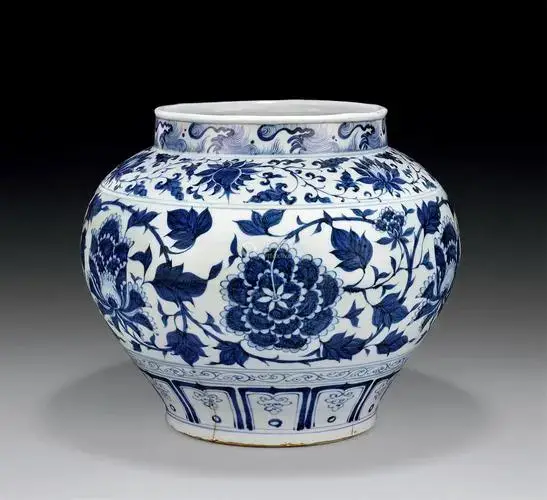
Peony Place Names in China
Peonies have a long history and cultural significance in China, and as a result, many places in China have been named after this beautiful flower. Here are a few examples of peony place names in China:
Luoyang: Luoyang is known as the “home of peonies” in China and hosts an annual peony festival, which is one of the largest flower festivals in the world.
Mudanjiang: A city in northeastern China that literally means “peony river.”
Puyang: A city in central China that means “garden of peonies.”
Shaanxi Peony Garden: Located in Xi’an, the capital city of Shaanxi province, this is a large garden dedicated to growing and displaying peonies.
Heze: A city in Shandong province that is famous for producing high-quality peonies.
Luoyang Peony Fairyland: This is a large garden in Luoyang that has over 800 varieties of peonies.
These are just a few examples of the many peony-related place names in China.
why is Luoyang peony famous for
Luoyang is a famous historical city in China that was once the capital of 13 dynasties, including Xia, Shang, Western Zhou, Eastern Zhou, Eastern Han, Cao Wei, Western Jin, Northern Wei, Sui, Tang, Later Liang, Later Tang, and Later Jin. The fame of Luoyang peony reflects its deep history. Luoyang became the capital of the Sui and Tang dynasties, and the national flower of Tang was peony. In addition, the flourishing culture of Tang poetry produced many works that described peonies in Luoyang. Peony cultivation in Luoyang began in Sui, flourished in Tang, and was most famous in Song. The story of Wu Zetian’s banishment of peonies also happened in Luoyang.
Luoyang peony festival
Luoyang Peony Festival is an annual event held in Luoyang, China to celebrate the blooming of peony flowers in the city. It usually takes place from late March to early May, which is the peak blooming season for peonies. The festival has a long history and is considered one of the most important cultural events in Luoyang.
During the festival, various activities and events are held to showcase the beauty of peonies, including flower exhibitions, art performances, cultural exhibitions, and local cuisine fairs. Visitors can admire the stunning scenery of peony gardens, watch traditional Chinese performances, taste local delicacies, and participate in cultural activities.
The Luoyang Peony Festival attracts a large number of tourists from all over the world every year, and it is a great opportunity for visitors to experience the unique culture of Luoyang and appreciate the beauty of peony flowers.
Luoyang peonies story
Another story about Luoyang peonies is related to Emperor Yang of Sui. There is a legend about Emperor Yang and peonies. One day, Emperor Yang took his many concubines to the Western Garden to enjoy the scenery. When they climbed to the top of the Yufeng Tower and saw the peonies in full bloom, they were all very happy. One of the concubines sighed and said, “Although the peonies are beautiful, it’s a pity that we can only look down on them from the tower and cannot appreciate their beauty up close.” To fulfill the concubine’s wish, Emperor Yang ordered flower experts from all over the country to come to Luoyang and overcome the challenge. After many experiments, a flower expert from Shandong finally succeeded in grafting peonies onto tall Chinese parasol trees. The peonies bloomed proudly and towered above the tower, pleasing Emperor Yang who called them “Tower Peonies.” Emperor Yang wanted to reward the flower expert, but a eunuch claimed that he was the one who led the effort and received many rewards from Emperor Yang. The Shandong flower expert was angry and vowed never to engage in this field again. As a result, this technique was lost.

Luoyang national peony garden
Luoyang National Peony Garden is a large botanical garden located in Luoyang, Henan Province, China. The garden covers an area of over 200 acres and boasts more than 1,000 species of peonies. It is known as the largest peony garden in China and is a popular tourist attraction, particularly during the annual Luoyang Peony Festival.
The garden is divided into several sections, each showcasing a different type or color of peony. Visitors can stroll through the garden and enjoy the stunning blooms, as well as attend cultural activities such as calligraphy and painting exhibitions, folk performances, and tea ceremonies.
The Luoyang National Peony Garden is also home to the Peony Museum, which displays various historical and cultural artifacts related to peonies, including ancient books, paintings, and ceramics. Visitors can learn about the history and significance of peonies in Chinese culture and society.
Overall, the Luoyang National Peony Garden is a must-visit destination for anyone interested in Chinese horticulture and culture, particularly during the annual Luoyang Peony Festival when the garden is in full bloom.
Mudan River
The Mudan River is a river in eastern China that flows through the province of Shandong and empties into the Bohai Sea. The Chinese name for the river is Mǔdān Jiāng, which literally translates to “Peony River”. The name is derived from the many peony flowers that grow along the river banks, which are famous for their beauty and fragrance in Chinese culture.
The Mudan River is a river in northeastern China, located in the Liaoning Province. It is approximately 394 kilometers long and has a drainage basin of around 17,400 square kilometers. The river flows from the northern slopes of the Changbai Mountains and empties into the Bohai Sea. The river is known for its beautiful scenery, including its clear waters and lush vegetation along its banks. The Mudan River basin is an important agricultural area, producing crops such as corn, soybeans, and wheat. The river also serves as a source of water for irrigation, industrial uses, and drinking water for local residents. The Mudan River is an important transportation route, with several ports and shipping centers located along its banks.
peonies vs roses
Peonies and roses are both highly regarded in Chinese culture, but they have different meanings and associations.
Peonies, known as “mudan” in Chinese, are considered the “King of Flowers” and are highly prized for their beauty, fragrance, and cultural significance. They are associated with wealth, prosperity, honor, and happiness, and are often used in traditional Chinese art and literature as a symbol of female beauty and grace. Peonies are also widely cultivated in China and celebrated in various cultural events, such as the Luoyang Peony Festival.
Roses, on the other hand, are also admired for their beauty and fragrance but have different meanings in Chinese culture. In general, roses are seen as a symbol of love and romance, and are often given as gifts to express affection and admiration. However, the meaning and symbolism of roses can vary depending on their color. For example, red roses represent passionate love and respect, while yellow roses represent friendship and joy.
In summary, both peonies and roses are significant flowers in Chinese culture, but they have different associations and meanings. Peonies are linked to wealth, prosperity, honor, and happiness, while roses are associated with love, romance, and friendship.
peonies vs hydrangeas
In Chinese culture, peonies and hydrangeas are both popular flowers with symbolic meanings.
Peonies are often associated with wealth, honor, and feminine beauty. They are considered the king of flowers in China and have been highly valued for over a thousand years. Peonies are often depicted in Chinese art, literature, and poetry, and are a common theme in traditional Chinese embroidery.
Hydrangeas, on the other hand, are often associated with humility, honesty, and gratitude. In Chinese folklore, the hydrangea is believed to be a symbol of filial piety, as it is said to bloom around the time of the Qingming Festival (a holiday for honoring ancestors), and is thought to be a sign that the spirits of one’s ancestors are at peace.
While both flowers have their own unique symbolism in Chinese culture, peonies are generally considered to be more prestigious and highly valued, and are often used to represent royalty or high social status. Hydrangeas, on the other hand, are seen as more down-to-earth and humble, and are often used to represent everyday virtues like honesty and gratitude.
peonies vs tulips
Peonies and tulips are both popular flowers in Chinese culture, but they have different meanings and symbolism.
Peonies, especially the red ones, are often associated with wealth, prosperity, and honor. They are considered the “king of flowers” in China and are a symbol of feminine beauty and elegance. Peonies are also associated with love, romance, and happy marriages. In Chinese art and literature, peonies are often depicted in paintings and poems to represent beauty, grace, and wealth.
Tulips, on the other hand, are relatively new to China and have only gained popularity in recent years. They are often associated with new beginnings, rebirth, and springtime. Tulips are a symbol of love and passion, but they can also represent forgiveness and healing. In Chinese art and literature, tulips are often depicted in paintings and poetry to represent the arrival of spring and the beauty of nature.
In general, peonies have a more traditional and cultural significance in Chinese culture, while tulips have a more modern and international appeal. Both flowers are appreciated for their beauty and are often used in celebrations, such as weddings and festivals.
peonies vs lotus
Peonies and lotus are both significant symbols in Chinese culture and are often used in art and literature.
Peonies are considered the “king of flowers” in China and represent wealth, honor, and prosperity. They are often used as a decorative motif in traditional Chinese art, and are also a popular subject for poetry. Peonies are associated with the month of April, and are often given as gifts during the Dragon Boat Festival.
Lotus flowers, on the other hand, are symbolic of purity, enlightenment, and spiritual rebirth. They are commonly depicted in Buddhist and Taoist art, and are a popular motif in Chinese ink paintings. Lotus flowers are also commonly used in traditional Chinese medicine, and are believed to have a variety of healing properties.
While both peonies and lotus flowers are highly regarded in Chinese culture, they represent different aspects of life and have different symbolic meanings. Peonies represent material wealth and prosperity, while lotus flowers represent spiritual purity and enlightenment.
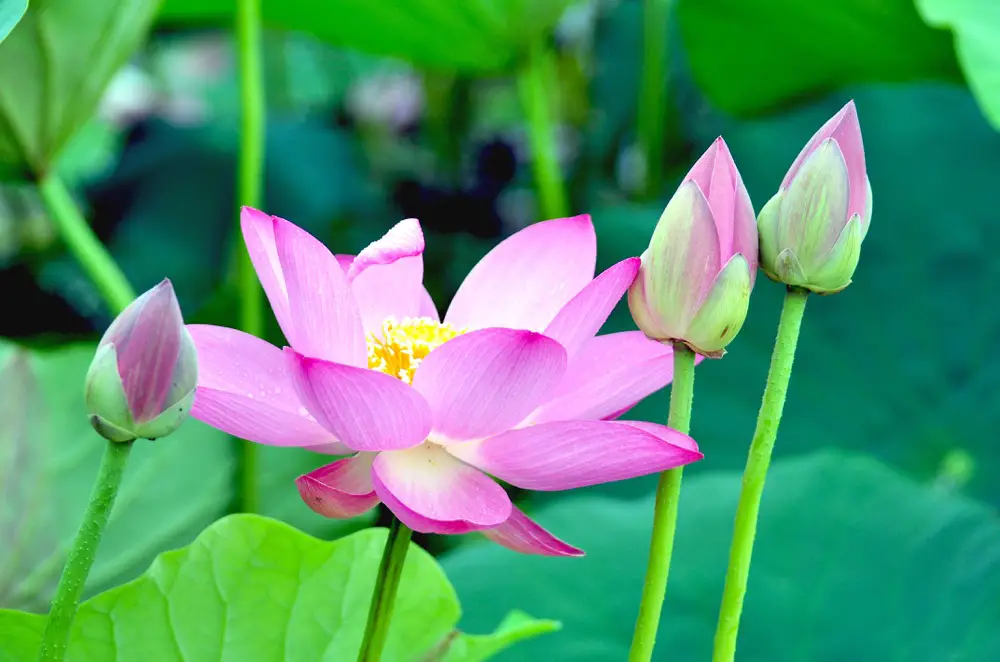
peonies vs plum blossom
Peonies and plum blossoms are both highly regarded flowers in Chinese culture, but they have different symbolic meanings.
Peonies are associated with wealth, honor, and prosperity. They are often seen as a symbol of female beauty and grace, and are commonly used in Chinese art and literature to represent female characters. Peonies are also thought to bring good luck and fortune, and are often used in traditional Chinese medicine.
Plum blossoms, on the other hand, are associated with resilience, perseverance, and hope. They are often depicted blooming in the winter, when other flowers are not in season, and are seen as a symbol of hope and renewal. Plum blossoms are also associated with purity and longevity, and are often used in traditional Chinese art and poetry to represent scholars and intellectuals.
While both peonies and plum blossoms are admired for their beauty and are important cultural symbols in China, they have distinct symbolic meanings and are associated with different values and beliefs.
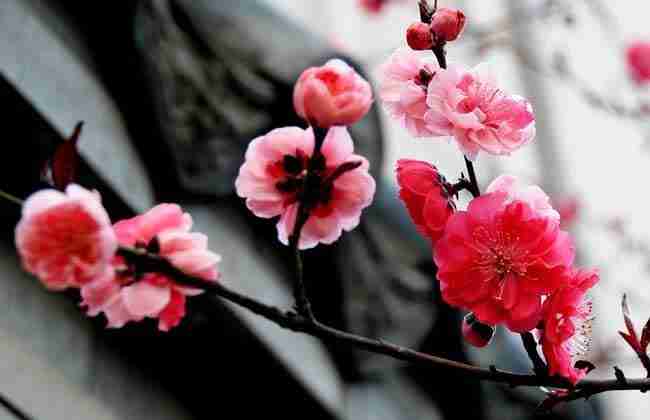
peonies vs sakura
Peonies and sakura (cherry blossoms) are both popular flowers in East Asian culture and have significant cultural meanings.
Peonies are often associated with wealth, honor, and prosperity in Chinese culture. They are also believed to symbolize love, affection, and beauty. In Japanese culture, peonies are associated with bravery and are often used in tattoo art to represent a samurai’s strength and courage.
Sakura, on the other hand, is a symbol of the transience of life in Japanese culture. They represent the fleeting beauty of life and are often used as a metaphor for the impermanence of all things. In Chinese culture, sakura is not as significant as it is in Japanese culture, but it is still appreciated for its beauty.
Overall, while both peonies and sakura are beautiful flowers, they hold different cultural meanings and symbolize different things.
what does peonies mean in a dream?
- Dreaming of peonies represents the possibility of gaining friendship, and red peonies indicate the favor of a beautiful woman. Generally speaking, dreaming of peonies is a good dream, but if you reach out to pluck them, it is not auspicious.
- Dreaming of peonies indicates a life of wealth, happiness, and good fortune.
- Dreaming of peonies represents the possibility of gaining friendship, and red peonies indicate the favor of a beautiful woman. Generally speaking, dreaming of peonies is a good dream, but if you reach out to pluck them, it is not auspicious.
- If a man dreams of peonies, it indicates that he will finally reap the fruits of his labor after working hard.
- If a woman dreams of peonies, it indicates that her future lover will be a wealthy and powerful man with a bright future.
- If a man dreams of peonies, it means that good luck is coming.
- If a man dreams of peonies, it means that good luck is coming. After a long period of hard work and struggle, his hard work will finally be rewarded. If an unmarried woman dreams of peonies, it indicates that her boyfriend has a high social status, a good family background, and is very talented and capable.
- Dreaming of peonies, which are bright and beautiful, means that good luck is about to come.
- Dreaming of tree peonies indicates a life of wealth, happiness, and good fortune. If you are a company owner, it also indicates that your business will prosper and bring in a lot of money, just like the splendid tree peonies.
- Dreaming of peonies, which are bright and beautiful, means that good luck is about to come.
- Dreaming of bright and colorful peonies indicates that for young women, their boyfriends will be outstanding, talented, high-status, and come from wealthy families.
- Dreaming of peonies in bloom is a good omen, indicating a happy life.
- Dreaming of bright and beautiful tree peonies means that good luck is about to come.
In conclusion, the peony holds significant importance in Chinese culture. As a symbol of wealth, prosperity, and happiness, it is a revered flower that is deeply ingrained in Chinese art, literature, and mythology. Its beauty, fragrance, and medicinal properties have made it a cherished flower in China and beyond, and its symbolism continues to inspire and captivate people around the world.